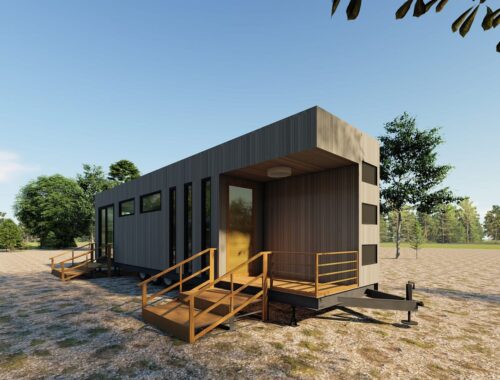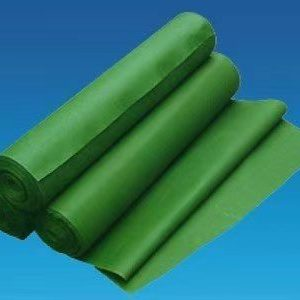What It’s Like to Be Bear Grylls’s Cameraman
Paul “Mungo” Mungeam on how he got his start and what it’s like as a father to shoot in the world’s most dangerous places
British cameraman and adventurer Paul “Mungo” Mungeam is the first to admit that in the media world, who you know is often more important than what you know.
In 1997, a chance encounter with famed cameraman Simon Niblett (who recently worked on The Eagle Huntress) laid the groundwork for his career. On a whim, Niblett hired inexperienced yet eager Mungeam as his camera assistant. In 2004, Mungeam hit it off with kindred adventurer Bear Grylls while filming a documentary about the French Foreign Legion called Escape to the Legion. Ten years later, Mungeam is still going to extremes to capture Bear’s daredevil stunts in Running Wild and British reality show The Island with Bear Grylls, often dangling from a helicopter or running up mountains while lugging his 30-pound camera. During his 20-year career, Mungeam has filmed some of the rawest, wildest places in the world—from the Cook Islands to Liberia—for the likes of the BBC, National Geographic, NBC, and Discovery.
After years of staying behind the lens, Mungeam is now stepping in front of the camera in search of mythical creatures like Namibia’s dog-headed pig monster and India’s mysterious monkey man for his own TV series, Expedition Mungo, which premiers May 28 on Animal Planet (episodes will be available online). “For years, I’ve stewed away behind a camera shooting interesting things but never being able to voice my opinion other than around a campfire or over a beer in a hotel bar,” says Mungeam. “It felt quite good to be telling my story with words, not just images.”
Age: 46
Job: Adventure cameraman
Hometown: Royal Tunbridge Wells, Kent, United Kingdom
Home Base: “As a cameraman, London is an ideal base to easily access the world.”
How He Got His Nickname: “I studied fine art in Sydney for three years, and Australians give everyone a nickname, usually by adding ‘go’ to the end. I became Mungo, and it just stuck. I liken it to Sting or Bono.”
Days Per Year on the Road: “It depends on the year, but on average six months, which as a single man was a lot more fun and a lot easier than being married with a two-year-old.”
Countries Visited: More than 90
Jet Lag Secrets: “I swear by melatonin tablets, and as soon as I get on a plane, I reset my watch to the destination time. The worst thing you can do is keep thinking, ‘It’s 3 a.m. back home.’”
Bucket List Destinations: “I fantasize about Greenland. I like that very few people go there. It seems so isolated. And I imagine the culture in Japan is so different that it feels like an alien world.”
Number of Cameras He Owns: “I’ve really never owned a kit in 20 years. Given the nature of what I do, I trash my cameras. I take them to the most extreme places on earth. I don’t want to jeopardize a shot because I’m stressed about my precious camera kit, so I rent gear.”
Adventure Hero: “Ranulph Fiennes is the epitome of adventure. He did it all before sponsorship and branding because he just wanted to explore. I have nothing but total admiration for him.”
Life Philosophy: “Keep it simple. I always try hard to live within my means.”
His Big Break: “In the late ’90s, I was working with at-risk youth at my church in London while trying to figure out what to do with my life. A friend introduced me to Simon Niblett, and over lunch I realized he was living my dream—that aspirational ‘wow’ life where you ride motorbikes and 4x4s and travel the world with a camera kit. A few days after meeting, he reached out to say he was hiring a full-time camera assistant and asked if I’d be interested. It was a golden opportunity. I had no idea that would be my lifelong career. It suited me and I suited it.”
University Is Overrated: “This is probably controversial, but I don’t think any kind of education or qualification will help you in this field. It will inform you, but nothing compares to being on location and learning the etiquette of being on a film set, knowing where to stand and when to speak. You cannot learn that in a classroom. I studied fine art in Sydney and was an oil painter, so I had an eye, but I learned to work a camera not by reading a book but by pressing buttons. My first-ever proper shoot was a Lonely Planet documentary in Cambodia, and I completely blathered my way into it.
“I worked for Simon for two years and like to say I earned my stripes making hundreds of cups of tea. I cleaned his camera gear and his cars, but I started to learn the ropes and get my head around different lenses. I eventually started to go on shoots with him. At first I just carried his bags, then he let me change out a lens, and eventually he started passing on work to me that he no longer wanted.”
Behind the Scenes: “My job requires extreme physicality. I’m carrying cameras that weigh up to 15 kilograms [33 pounds] on one shoulder for 12 hours a day, living out of a bag in a tent, working in the elements when it’s snowing or gale-force winds are blowing. It’s bloody hard work. Footage is delivered with blood, sweat, and tears sometimes. Bear is a like-minded guy. We both have a strong Christian faith, and I think that helps us trust in our decisions when we get into extreme situations. When we were both single, we really didn’t think twice about crossing a freezing river in Siberia or eating a live snake. There were times when I’d think, ‘Aw man, are we really doing this?’ My stomach has turned a few times, but we have a real trust. Now that we’re both fathers, we talk a lot more about the risks involved in our projects.”
On Being a Father: “Being Daddy has become more important than being Mungo. When I was a maverick single man, I saw myself as almost disposable. Now I believe there are more important things than work. The weekend my son was born, Bear was doing a shoot with Barack [Obama], and I had this massive wrestle. My wife, about ready to pop, said, ‘I know this is a once in a lifetime opportunity, and I will understand,’ but I couldn’t go. It was a shame to miss, but I saw the birth of my son, and that is more precious than shooting any show.”
Preparing for the Worst: “I’m a strong believer that you live for today, not tomorrow, partly because what I do statistically is quite dangerous, and I often think maybe I won’t be here tomorrow. Every time I go on a dangerous shoot, I write an emergency file and send it to three people—a friend, my father, and my eldest sister—to ensure everything gets squared away in case the worst happens. I don’t do this because I have a death wish, but because it’s the responsible thing to do. I want the people I love to enjoy life. If an accident were to happen, I don’t want to be a burden.”
Most Dangerous Place He’s Filmed: “The scariest, most dangerous places end up making for some of the best TV to watch. For Expedition Mungo, we went to Liberia, a West African country that has endured 14 years of civil war and Ebola. The country was left in complete tatters, and after so much internal unrest, corruption tends to rule and is often led by the gun. We knew going in that it was a risk. If someone broke a leg or got bit by a snake, the infrastructure was so poor that we wouldn’t have been able to get them out. From an insurance point of view, it was a nightmare. The country still has a hell of a lot of healing to do.”
Working with the Production Team: “As a cameraman, I’m a bit like the cavalry. I fly in, shoot the place up, and get the hell out. Sometimes I rarely even look back at what I’ve shot. I know from experience when I’ve got it, and then I hand over my tapes to the production team. The editor has a blank canvas but can only paint with the colors I give him. Handing him my footage is like handing him a palette with a lot of options. If the paints are bad, the painting will be bad.”
Keeping Fit: “My body has taken a toll. I’ve had operations on both knees and both shoulders. I’m no Schwarzenegger, but I train. My wife, Helen, knows that if I’m not on assignment, I need to put in at least an hour cycling or swimming. I do push-ups and sit-ups. I don’t ever want to hold our team back because I can’t keep up.”
Trick to Avoiding Desk Work: “I don’t own a desk. I’ve got my kitchen table surrounded by my son’s dinosaurs and robots. The only administrative responsibilities I have are applying for visas and invoicing, which I can do anywhere thanks to apps and online banking.”
Tips for Photographing Wildlife: “Understand your animals by spending time with them. One of my proudest moments was sitting on a rock, surrounded by over 400 gelada baboons in the Simien Mountains in Ethiopia. I was filming for National Geographic, and that was my ‘I’ve made it’ moment. But I spent weeks in those mountains, and, to be honest, most of the time it was really, really boring. I remember looking at the alpha male thinking, ‘Just do something.’ Eventually he accepted me into the troop.”
Advice to Wannabe Adventure Camerapeople: “It takes a special personality to do this job. You need to cope with the unpredictable—not knowing where your next job or paycheck comes from. Some people love it and can handle it, and others can’t. Confidence, leadership, and humbleness go a long way.”
The Best Crossover Shoes for Men
You May Also Like

トレーラーハウスで叶える自由な暮らし
March 17, 2025
HOW TO PREVENT MOLD AND MILDEW ON TRUCK TARPAULINS?
November 22, 2024